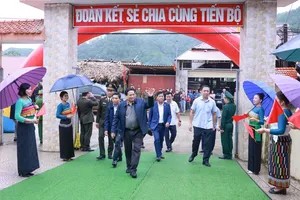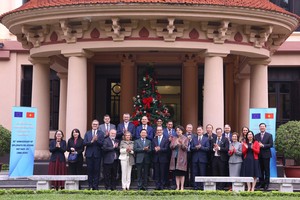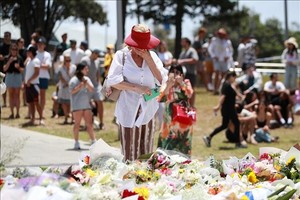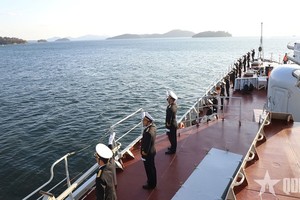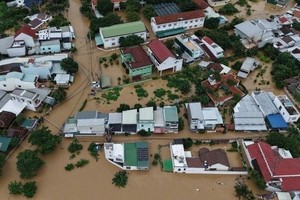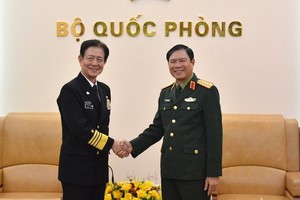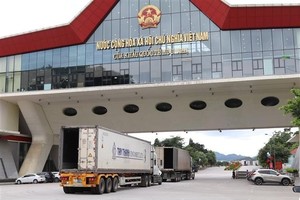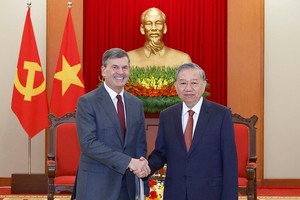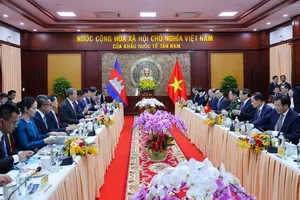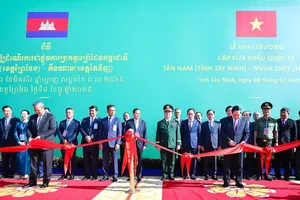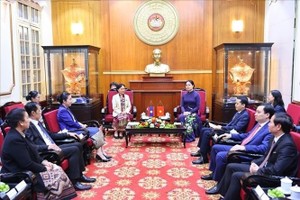After examining the plan, the North's leader said that he would watch Washington's behavior "a little more," but it will make an "important" decision if the U.S. continues its "extremely dangerous reckless actions" on the divided peninsula, according to the Korean Central News Agency (KCNA), source from the Yonhap.
He made the remark on Monday during his inspection of the Strategic Force command which threatened last week to fire four intermediate-range ballistic missiles towards Guam.
The North's unit in charge of missile launches said that the Hwasong-12 missiles will fly over Japan and splash down 30-40 kilometers from the western Pacific island.
"In order to defuse the tension and prevent dangerous military conflict on the Korean Peninsula, it is necessary for the U.S. to make a proper option first and show it through action," Kim said.
The latest remark may indicate that there are no imminent plans to fire off missiles by the repressive regime, but it could make provocations depending on how Seoul and Washington conducts their annual joint military drills slated for late this month.
The warning came after Gen. Joseph Dunford, the chairman of the U.S. Joint Chiefs of Staff, said in Seoul that military options would come only after sanctions fail.
But the general made it clear that the U.S. is ready to make a "decisive" military response to Pyongyang's possible missile strikes near Guam.
U.S. Defense Secretary Jim Mattis also warned Monday that the U.S. will go to war with the North if it fires missiles at Guam.
Guam, more than 3,000 kilometers southeast of North Korea, is a base for numerous high-profile U.S. military weapon systems, including strategic bombers, as well as the THAAD missile defense system.
Tensions rose amid a flurry of exchanges of bellicose rhetoric between the North and the U.S. after Pyongyang launched two intercontinental ballistic missiles (ICBMs) in July. The U.N. Security Council adopted a fresh U.S.-led sanctions resolution on the North in early August.
President Donald Trump said that the North will meet "fire and fury" should it continue to threaten the U.S. He also warned that military solutions are "in place, locked and loaded" for implementation.
There are concerns here that any miscalculation may trigger an armed conflict on the Korean Peninsula. But key U.S. officials dismissed the possibility of an imminent war with North Korea.
Experts said that tensions are likely to flare up again as South Korea and the U.S. conduct their Ulchi-Freedom Guardian (UFG) exercise starting Aug. 21 for about two weeks. North Korea has claimed that the drill is a rehearsal for northern invasion, despite reassurances by Seoul and Washington that it is defensive in nature.
Some analysts interpret the North's latest wait-and-see stance as a signal that the standoff between U.S. and North Korea may enter a new phase in which related parties would explore diplomatic breakthroughs.
"By announcing how the country will move forward, the North has revealed its true intention of dealing with the U.S. in a systemic methodology," said a senior South Korean government official, who asked for anonymity.
Kim Yeon-chul, a professor of North Korean studies at Inje University, said Pyongyang is ultimately seeking to bargain with Washington.
"North Korea has maximized the threat level, but it is also asking for an excuse to suspend the threat," said Kim.
Pyongyang said in June that it can place a moratorium on its nuclear and missile tests if the U.S. suspends the military drills, but the allies rejected the idea.
Seoul's defense ministry said Monday that it is not considering scaling down this year's exercises.


